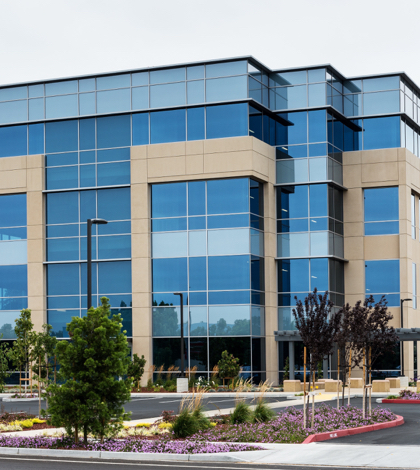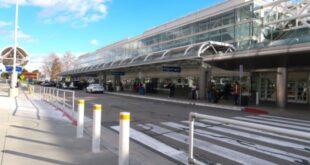New construction is not on the horizon. Instead, look for brokers to continue to fill the vacant space that continues to clog the market.
Taylor Ing is bullish on the Inland Empire office market.
Ing, senior managing director with Newmark Grubb Knight Frank Ontario, isn’t predicting that any office buildings will be built on “spec” in Riverside or San Bernardino counties in 2017. The economy has yet to shake off the worst effects of the recession, and there’s still too much empty space that needs to be filled before that can happen.
But Ing, a real estate broker in the Inland Empire for 20 years, predicts something almost as good happening between now and the end of the year: Not a speculative project, meaning one built without signed tenants, but not a strictly build-to-suit, either.
“I could see someone building something that’s 50 percent leased and the other half [speculative], probably on the west end near Ontario Airport,” Ing said. “I think that’s the best we’re going to get, but that wouldn’t be bad.”
Should Ing’s forecast come true it will move the Inland Empire office market a step or two closer to where it was in 2008, when it was stopped cold by the recession. Several of the most recent quarterly reports show the market, like the economy itself, on a slow but consistent climb back to respectability.
Last year, 323,172 square feet of office space was added in the two-county region, thanks mainly to a lack of new product coming online. It was the fifth consecutive year the Inland Empire posted positive net absorption, according to Newmark Grubb.
Vacancy fell to 12.9 percent during the fourth quarter, about three points higher than what’s considered normal for the Inland Empire. During the current cycle, office vacancy hit a peak of 23.9 percent during the second quarter of 2011.
Average asking rents were $1.63 per square foot at the end of the fourth quarter, up 2.4 percent compared with the previous year. That was 5.5 percent higher than the low point in this cycle, which was 1.54 per square foot during the first quarter of 2012, Newmark Grubb reported.
CBRE Group Inc. Ontario told a similar story.
Its fourth quarter office report found a 12.5 vacancy rate, with occupancy up in both the eastern and western submarkets. Net absorption for the quarter was slightly more than 120,000 square feet, with much of that activity happening in Ontario and Rancho Cucamonga.
The Inland Empire office market has now achieved positive net absorption in 19 of the past 20 quarters, according to CBRE.
Average lease rates during the fourth quarter were $1.87 per square foot, up slightly compared with the third quarter and year-over-year, CBRE reported.
At the market’s lowest point, some building owners were making outlandish concessions – including free rent for three or even six months – in order to secure a lease. Mercifully, those days are gone.
“We are very optimistic about the office market,” Ing said. “It’s in better shape than it was a year ago, and it’s headed in the right direction. The recovery could be derailed – there are a lot of ways that could happen – but I don’t think it will. The main thing with any office market is jobs, and [Inland Empire] office market is strong right now.
“If companies are hiring, they need more office space.”
The Inland Empire office market hasn’t changed much in the past few years: it’s still trying to fill in empty space, some of which was built before the recession started, said Rick Lazar, senior vice president at Coldwell Banker Commercial in Redlands.
“They’re not building any new stuff,” said Lazar, a veteran commercial real estate broker in the Inland Empire. “That will happen again someday, but right now there aren’t any signs of office construction.
“We’re still in recovery, it’s just not moving as fast as some people would like.”
Lazar recently helped negotiate the sale of a two-story office building in San Bernardino for $930,000. That kind of transaction, common in the Inland Empire for the last several years, could become more difficult if interest rates go up, as Lazar expects toward the end of the year.
In baseball terms, the Inland Empire office market is being driven by “bunts, singles and the occasional double,” not larger deals comparable to home runs, Lazar said.
“There are still a lot of opportunities out there, but it’s a good idea for people to take advantage of them while interest rates are still low,” Lazar said.
A lot of retail space in the Inland Empire is being converted to office space, a sign that the market has some flexibility, said Jay Prag, professor of economics and finance at the Drucker School of Management at Claremont Graduate University.
“My sense is that the market is still off a little bit, like a lot of markets in California,” Prag said. “I think it’s going to stay slow for a while.”
 IE Business Daily Business news for the Inland Empire.
IE Business Daily Business news for the Inland Empire.


